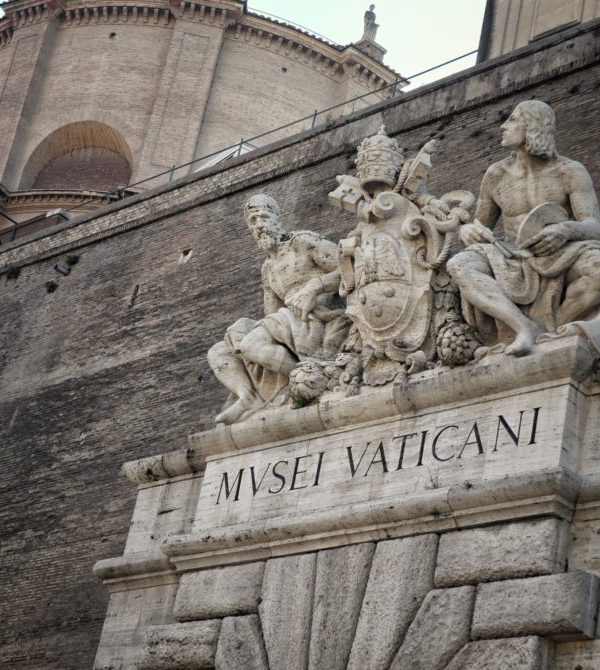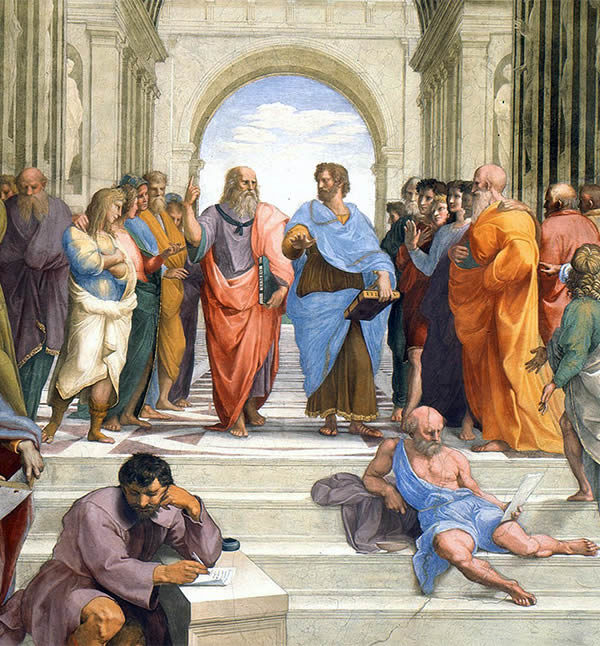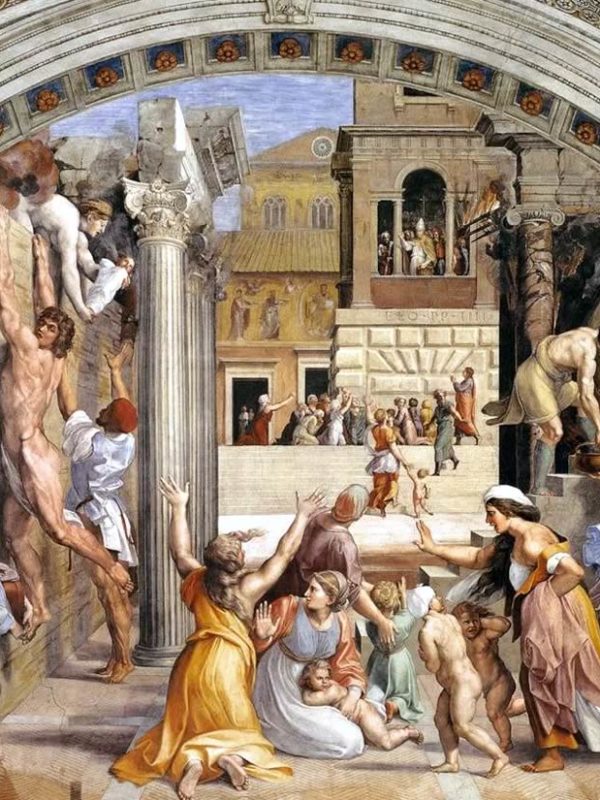Twenty years after finishing his work in the vault, in 1532 Michelangelo was commissioned by Pope Clement VII (1523-1534) to paint the back wall of The Sistine Chapel; but work began only in 1536 under the next pope, Paolo III Farnese (1534-1549), and ended in 1541, when on October 13, with a solemn ceremony, the grandiose fresco was discovered. It was also to be the symbol of the papacy’s renewed supremacy after the tragic events of 1527, in which the city had been sacked by the German mercenary militia of the Lanzichenecchi, and after the Lutheran crisis that had shaken the authority of the Church of Rome so much .
Michelangelo’s first act had been to line the affected wall with a brick wall slightly inclined upwards towards the classroom (26 centimeters), so that the dust deposited less easily on the surface and the perspective deformations could be corrected visually . In this way some fifteenth-century frescoes and the lunettes painted by Michelangelo himself were lost.
Although inspired by biblical texts, in particular the book of Revelation, as well as the Divine Comedy by Dante Alighieri, the tragic philosophical vision of the artist prevails in Michelangelo’s work: in the center is Christ who, flanked by the Madonna, with a simple movement of the arms decides the inevitable otherworldly fate of men; for some there will be salvation (represented by the figures, on the left, who ascend to heaven), for most there will be the condemnation to damnation (the nudes, on the right, who plummet towards Hell).
The figures move as in a whirlwind, against the background of a blue sky without architectural support. The deceased, lower left, whose skeletons gradually regain consistency until complete reincarnation, are awakened by long sleep from the trumpets of the angels. The latter, wingless, are positioned in the center of the painting and show two books: one, smaller, held in the hand by the Archangel Michael, which contains the names of the blessed, the other larger, with the list of the damned .
To the left of Christ are recognizable: Saint Andrew, from behind, with his cross; Saint John the Baptist, with a powerful body, which could represent Adam. Below are instead: San Lorenzo, with a staircase to commemorate the torture suffered on a grate placed over hot coals; San Bartolomeo, who holds in his hand a human skin emptied of flesh (according to some, it would be the portrait of Michelangelo).
On the right it is possible to distinguish: Saint Peter, with the face of the commissioning pope Paul III holding out the keys, one silver and the other gilded; below San Biagio, which shows the iron combs of his torture and Saint Catherine of Alexandria, with a toothed crescent, alluding to the way in which she was martyred (these two figures, especially the first one, underwent a substantial remake in 1565 to correct its pose, considered impudent); next to it is San Sebastiano, kneeling and with arrows in his hand. A little further down, always on the right, is the famous figure of a damned man in the act of covering his eye, frightened by the terrible vision.
To underline, again, the scene featuring Charon, the mythical ferryman present in Virgil’s Aeneid and Dante’s Divine Comedy: he pushes the souls of sinners out of the boat into Hell to abandon them to their dramatic destiny. This group is concluded, towards the corner, by the figure of Biagio da Cesena, papal master of ceremonies who had judged Michelangelo’s work worthy of a bathroom or a tavern: to take revenge, the artist had represented him with the appearance of Minos, one of the judges of the afterlife in Greco-Roman mythology, in the act of indicating to the damned the group for which they were intended, through the number of serpent coils wound on his body.
Finally, on the top of the fresco are the symbols of Christ’s passion: the cross, the crown of thorns, the dice with which the guards played, the column of the Flagellation, the sponge with which he had been watered.
Here Michelangelo’s style is profoundly different from that of the vault and expresses his changed sentiment towards life: God is the severe judge that no one can oppose, neither the Madonna nor the man. For this reason, the bodies are as heavy as pain, as if they carried within themselves the traces of earthly experience. The colors stand out against the dominant intense blue, and from the range of reds they pass, with few exceptions, to shades of brown and green to black, to underline the tragic reading of events. Only behind the figures of Christ and the Madonna who has the celestial mantle, the background is enlivened by intense yellow to underline the power of the raised arm.
Due to the decisions of the Council of Trent, which closed in 1563 with the recommendation to have only works that had decorum and conformed to the sacred scriptures be performed in sacred environments, the frescoes of the “Last Judgment” were retouched in 1565 by a pupil of Michelangelo, Daniele da Volterra, who applied veils and thongs to cover the nakedness of the figures, for this reason he was nicknamed “the braghettone”. Other interventions were carried out for the same reason in the late sixteenth century and in the two following centuries.
At the time of the restoration of the wall, there was much discussion among scholars as to whether or not to remove these dry roofs, some arguing for the opportunity to faithfully highlight Michelangelo’s work, for others the need to maintain them. as a sign of the passage of the work of art over time. Finally, it was decided to leave only the intervention of Daniele da Volterra, a tangible testimony of a historical era, and to cancel the subsequent remakes, because, as John Paul II said during the Mass of 8 April 1994 held in the Chapel to celebrate its reopening after restoration, “the Sistine Chapel is precisely the sanctuary of the theology of the human body” and “is a testimony to the beauty of man created by God as male and female”; in it Christ expressed “the whole mystery of the visibility of the invisible“.



